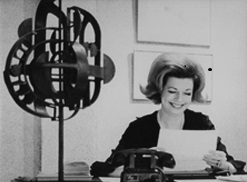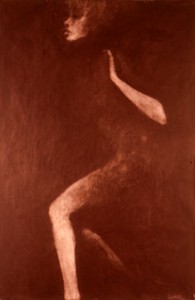R. v. King: “Defining Mens Rea”
R. v. Cameron: “Art Found Obscene”
R. v. King: “Defining Mens Rea” [1]
On October 8, 1959, Grant King went to the dentist. He was given a general anaesthetic – sodium pentothal – and then had two teeth extracted. Mr. King regained consciousness about 45 minutes after the procedure, paid the dentist’s account, and was warned by the dentist’s nurse not to drive a car “until his head was perfectly clear.” He left the office, drove away and promptly hit a parked truck. The police officer on the scene said Mr. King staggered when walking, denied he’d been drinking, and said he just had teeth extracted and the dentist had given him sodium pentothal. Mr. King was adamant – he stated he did not hear the nurse’s warning about not driving and didn’t know about the possible effects of the anaesthetic.
Mr. King’s tale of woe took him from Magistrates’ Court in Toronto to the Supreme Court of Canada – and ultimately resulted in a leading case on the essential elements of a criminal offence.
Magistrate T.H. Wolfe convicted Mr. King of driving a motor vehicle impaired by a drug contrary to the Criminal Code. He imposed a fine of $50.00, or imprisonment for a term of 10 days in the event of non-payment of the fine. This despite the fact that Mr. King argued he should not be found guilty because he was acting involuntarily.
Dissatisfied with this result, Mr. King pursued a trial de novo before a County Court judge – a federally appointed judge. At this time, an appeal from a Magistrates’ Court was heard by way of trial de novo. Instead of today’s practice, where an appeal judge generally relies on a trial judge’s factual findings, a trial de novo means the entire trial is heard over again – additional witnesses could be called, arguments could be strengthened. With a trial de novo, it’s as if the original trial was never held. Not surprisingly, the possibility of a “second try” did nothing to strengthen the reputation of the Magistrates’ Courts of the day. Their decisions could be easily ignored – and often were.
Mr. King’s conviction by Magistrate Wolfe was affirmed in the County Court. He then appealed that decision and this is where his luck started to turn and the case began to make legal history. The case eventually made its way to the Supreme Court of Canada.
Punishment for the commission of a crime in Canada is only permitted where a person has committed a criminal act for which that person is “morally responsible.” This means that under Canadian criminal law, “a crime consists of the commission of the prohibited act (in Latin – the actus reus) with the required degree of ‘moral fault’ (the mens rea). The actus reus may consist of an act, an omission or sometimes even a state of being (for example, being in possession of some prohibited matter, such as a weapon.) The mens rea is the so-called subjective element of the crime because it concerns the accused’s state of mind at the time of the commission of the alleged offence.”[2]
The final judgment in this case came down to the question as to whether mens rea relating to both the act of driving and to the state of being impaired was an essential element of the offence. In other words, did Mr. King possess that requisite “moral fault?” The Supreme Court found that he did not – Mr. King became impaired through no act of his own will and he could not reasonably be expected to have known his ability was impaired or could have become impaired when driving his car.[3] Mr. King had a good defence to the allegations and his conviction was reversed.
- [1961] O.J. No. 23, [1962] S.C.R. 746 ↩
- F.C. DeCoste, On Coming to Law: An Introduction to Law in Liberal Societies (Toronto: LexisNexis Canada Inc., 2011), p. 265.↩
- R. v. King [1962] S.C.R. 746 ↩
R. v. Cameron: “Art Found Obscene”[1]
In the 1960s, “Toronto the Good” was an apt moniker for a city that was still a bastion of Victorian morality. Change, however, was on the horizon. Yorkville was flourishing as a hippie hub, attracting young people from across Canada. Politicians, all the while, heatedly denounced the neighbourhood. An MPP of the day, Syl Apps, called Yorkville a “festering sore in the middle of the city.” The Dorothy Cameron Gallery was located on the eastern fringe of Yorkville during that period. A sculptor, Cameron was committed to showing the best of Canadian art of the day, including abstract paintings of nudes.
In May 1965, Cameron launched a show of nudes – some depicting lesbian behaviour and all with a strong sexual connotation – called “Eros 65.” Cameron quickly found herself facing seven Criminal Code charges of “exposing to public view obscene pictures.” In November 1965, she found herself in front of Magistrate F.C. Hayes, the man who would become Chief Judge of the Provincial Court (Criminal Division). Hayes convicted her and imposed seven fines of $50 each. The case was appealed to the Ontario Court of Appeal where the appeal was dismissed – the Court of Appeal agreed with Magistrate Hayes. As Hayes had written in his decision “the search for artistic merit cannot be allowed as an excuse to exceed the bounds set by the definition of obscenity…There is in my judgment, such a relationship created between the figures [in the paintings] than an over-all consideration of each picture leaves no other impression than the dominant characteristic in each exhibit is the exploitation of sex.” Hayes considered the question of whether the public good was served by the acts in the paintings alleged to constitute the offence. Hayes was emphatic – the public good was not served by these seven pictures in question.
The case is interesting for a variety of reasons.
One dissent was recorded in the Court of Appeal decision. It was delivered by Bora Laskin who would become the Chief Justice of Canada in 1973. Reading his reasons, one can see a move away from the Victorian strictures that still bound society in the 1960s. He wrote: “Having regard to the terms in which Parliament has cast the definition of obscenity, I do say that if the artistic purpose of the author emerges as a dominant characteristic, as in my opinion is the case here, it will be a rare instance indeed in which that dominance can be said to be so suppressed by a sexual theme as to make the exploitation of sex a dominant characteristic which is undue…Literature [or art] which serves the public good cannot be obscene. It should be a simple as that.”
Magistrate Hayes was not the only future chief judge associated with the Cameron case. Police raided Dorothy Cameron’s gallery during the opening of the “Eros 65” show. One of those in attendance was Sidney Linden who, at that time, was the general counsel for the Canadian Civil Liberties Association. In 1990, Linden would become the Chief Judge of the Ontario Court of Justice (Provincial Division) – the successor of Hayes. Linden watched Dorothy Cameron face off against the police during that raid. As recounted in the Court of Appeal reasons, when Cameron realized that police were taking possession of the pictures in question, “she threw herself against the wall with her arms out and exclaimed: ‘You’ll have to kill me first before you take my pictures.’” Linden has cited this event as a transitional moment in his legal life, watching the police in action and considering the role of the law as it intersects with the liberties of Canadians to express themselves. It reinforced his commitment to protecting civil liberties.
- [1966] O.J. No. 1047, 1966 CanLII 162 (ON CA)↩


